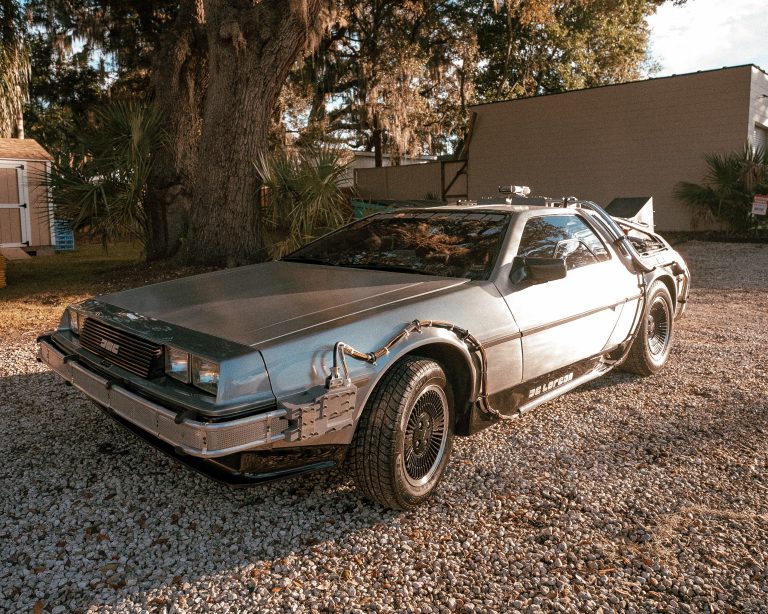At one time, DeLorean was the true stud in the market. The company was an American automobile manufacturer focusing on building the most iconic cars in history. Yet, a few mistakes led to the eventual failure of DeLorean.
In this article, we will explore the reasons and learnings from the case study of the DeLorean Motor Company’s failure.
Origins of the DeLorean Motor Company
DeLorean Motor Company (DMC) was founded in 1975 by John DeLorean and was headquartered in Michigan, United States.
DeLorean Motor was famous for producing the DeLorean DMC-12 sports cars.
The car was known for its futuristic design, with a stainless-steel body and gull-wing doors. In 1981, DMC produced 7,500 sports cars out of which they sold about 3,000 cars.
The company had been innovative and delivered products that were never expected by anyone. So, what different factors were behind DeLorean failure?
What caused DeLorean to fail?
1. UI versus UX
Any product ever made needs to have a good User Interface(UI) and must provide a good User Experience(UX).
One of the factors for the failure of Delorean is a lack of understanding and implementation of this fact.
DeLorean Motor Company believed that its product would sell itself based solely on its innovation.
However, they did not invest enough in design experts who could help them differentiate themselves from other manufacturers such as Toyota or Ford.
Other manufacturers, such as Chevrolet, were already offering similar models with more powerful engines and higher fuel economy ratings than DMC could.
As a result, the slow Delorean couldn’t keep up in the market.
2. Outpaced by competitors
Keeping close eyes on the competitors could save a lot of companies from going downhill. We have seen how competitors outsmarted companies and caused them to go bankrupt!
At that moment, the other manufacturers were adopting smart financial decisions.
They constantly refreshed their existing models to save money, allowing them to sell at lower production costs and enter the market at a lower market price than the DMC.
With time, consumers shifted to fuel-efficient cars for cost savings and to reduce their carbon footprint.
But, DeLorean failed to realize it and failed to adopt a fuel-efficient engine.
In comparison, the Chevrolet Corvette was equipped with a V8 engine that was more fuel-efficient and cost-effective than the V6 engine used by DeLorean.
The Corvette’s engine was able to deliver improved performance while still being economical to run, making it more attractive to consumers.
The competitors outpaced DeLorean in this way and gained customers.
3. Getting stuck on one innovation
It often happens, that when a company has built something outstanding, they begin to feel that they need not put any more effort.
The same thinking led to the failure of Nike’s fuelband innovation and now, DeLorean failure.
DeLorean heavily focused on the production of sports cars.
Even though these were becoming less popular as gas prices increased and consumers sought more practical and fuel-efficient vehicles.
The Corvette, on the other hand, was able to adapt to changing market conditions by offering both a sports car and a more practical option in the form of its fuel-efficient engine.
If DeLorean had innovated a few more features or products, it might have been saved.
4. Financial difficulties
DeLorean made some poor decisions which acted as fuel to fire their failure.
The company decided to produce fuel-efficient vehicles in Northern Ireland, a country with a high unemployment rate and favorable government incentives for production.
The production didn’t start until 1981 as a result of delays.
The business went bankrupt due to low customer interest, expensive production, and unfavorable exchange rates.
In addition, before going bankrupt, the business was sued and investigated by the FBI and the SEC.
When DeLorean was ready to begin producing vehicles, it already had an enormous debt load that complicated production.
5. Poor Business Leadership
“A lousy leader may take a solid team and ruin it, driving the best workers away and demotivating the rest” is true.
The failure of Commodore was also a result of bad leadership.
Similarly, John DeLorean was not a good businessman. He did not know how to run a business or deal with investors before beginning his car company.
John DeLorean lacked the necessary skills to effectively manage the company or make sensible financial decisions.
He decided at the moment to do the majority of the production work in-house, which was difficult and costly.
This consumed a significant portion of the investor’s funds. And it meant that not nearly enough money was expended on design and engineering.
Such a poor decision ended in producing a vehicle that looked great and sparked some interest but was mechanically unsound and, at the time, incredibly slow.
Concluding the failure story of DeLorean:
Factors like a lack of innovation, not adapting to the changing market trends, and not prioritizing customers’ needs & demands along with the nearsighted decisions by the business leaders led to the company’s downfall.
In 1982, DeLorean went bankrupt. The company had produced only 9,000 DMC-12 cars.
Such factors have led to the product failure of Compaq, Pebble failure, and Hummer failure.
The need for companies to prevent such a fate is to embrace a culture of innovation and capture innovation efficiently in the organization.
And your first step in doing so might be to implement an idea capture tool!



